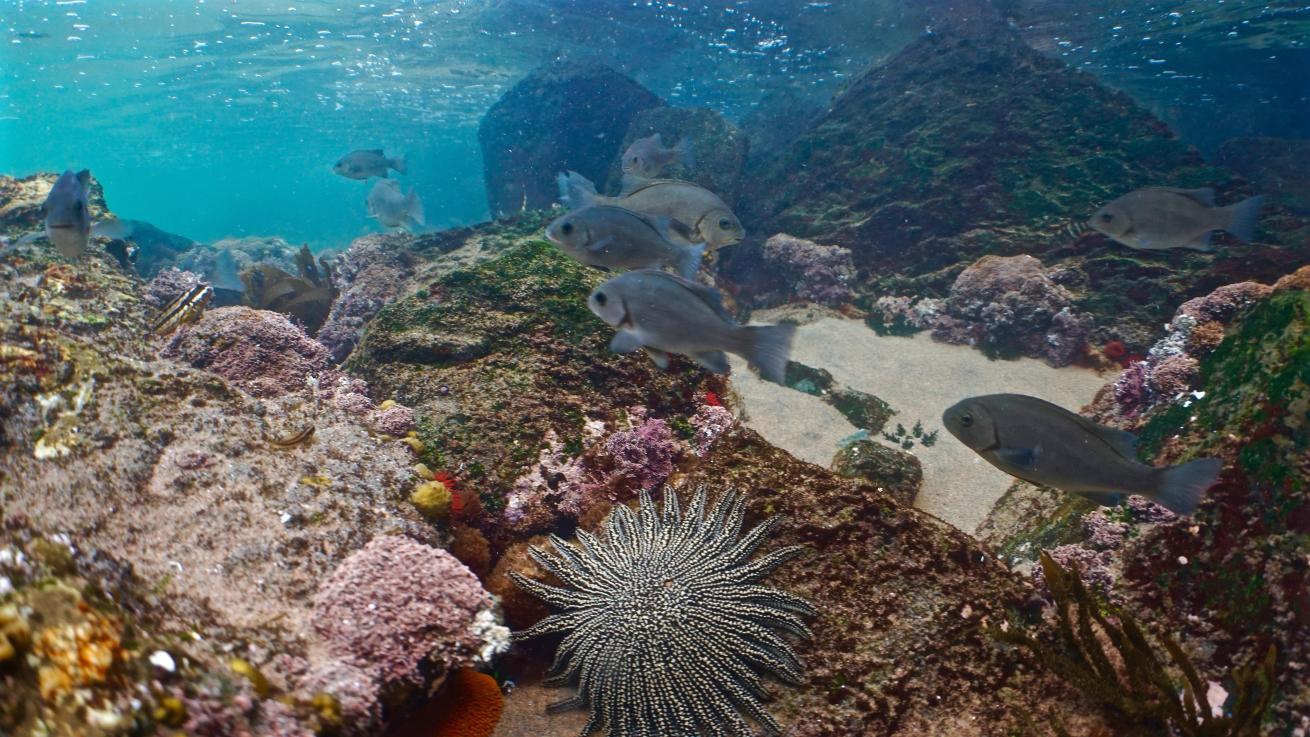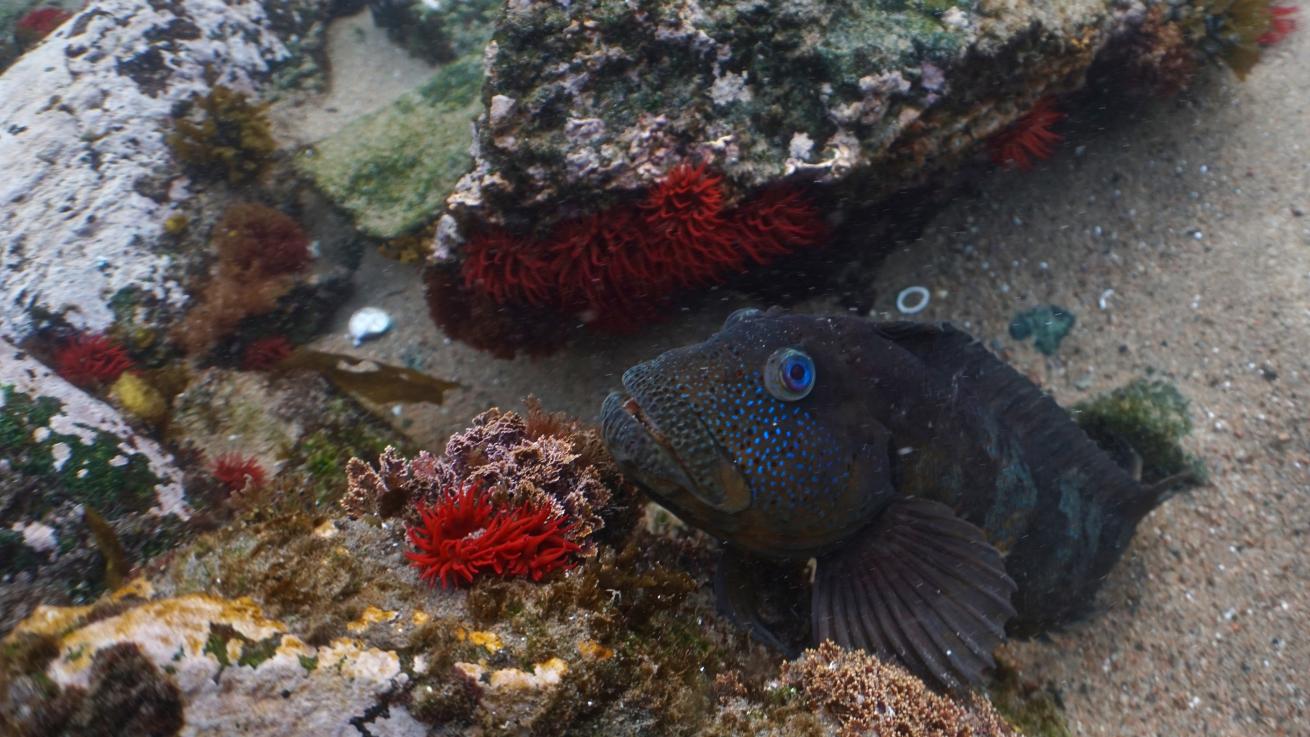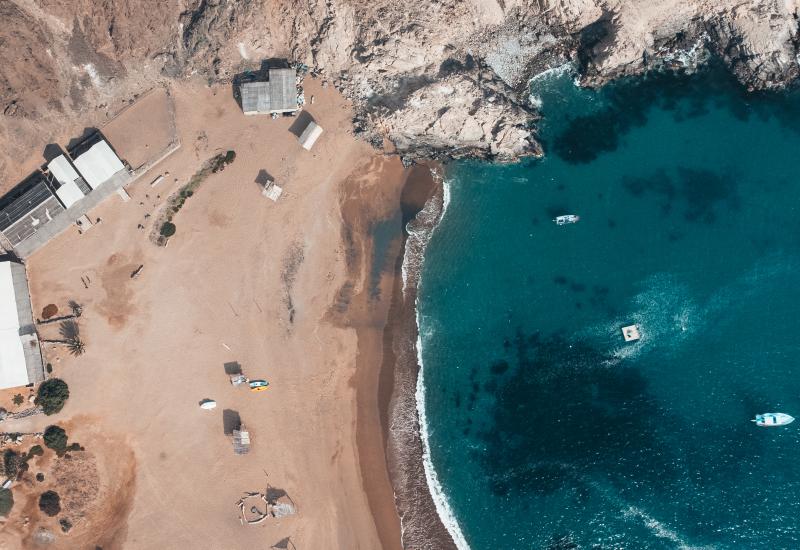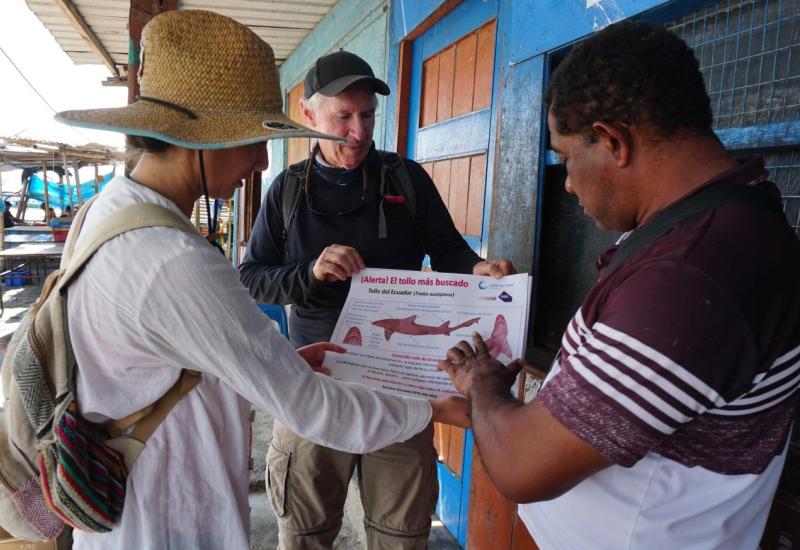4 Best Scuba Diving Destinations in Peru

Denisse SotomayorButterflyfishes and soft pink corals fill the underwater landscape of Punta Veleros Reef in Piura.
Peru may be best known for larger-than-life attractions like Machu Picchu, the Amazon and the Andes, but its underwater world is still relatively unknown. The diving industry here is very small, but in recent years it has grown, and dive centers can now be found all along the Peruvian coast. Here are our top four dive destinations in Peru.
Denisse SotomayorGreen sea turtle and fishes under Los Organos Pier.
Piura - Los Organos
Piura is a city in the north of Peru recognized for its beautiful beaches, its seafood-based cuisine and the opportunity to do different water activities, such as surfing, kitesurfing, fishing and for 10 years it has also been known for its scuba diving spots.
Los Organos pier doubles as an artificial reef, its columns teeming with life. It has become popular due to the large number of resident green turtles that have stayed in the area to take advantage of the food discarded by fishermen while filleting fish on the pier. You can also see many charismatic pufferfish, tramboyo (a local bass species) and a large number of brittle stars.
It is easily accessible simply by walking in from the shore. The maximum depth is 23 feet, so it is recommended to go at high tide, ideally when there are minimal waves. On the sandy bottom, you can see various types of rays, flounders and the Pacific seahorse, the largest seahorse species in the world, which can grow up to 12 inches.
Related Reading: Looking for Lost Sharks
Just 10 minutes by a small boat from the pier, there is an expansive rocky reef full of colorful soft corals, and among the rocks, you can find many types of nudibranchs (some endemic to the area), octopuses, moray eels, rays, lobsters and fish such as the king angelfish, Moorish idol and small groupers.
The maximum depth is 32 feet and the tropical fish are vibrantly colored. However, the real highlight of this site is a small cave. Here you can peer into and see a brilliant shoal of yellow barberfishes, a species of butterflyfish.
Both dive sites are located in the Peruvian tropical current, with warm waters compared to the rest of the country, that don’t drop below 68°F. It is recommended that you wear at least a 5 mm wetsuit. The weather is sunny year-round with decent conditions, but the best time of year to visit is from August through October because that’s when humpback whales arrive for their breeding season.
While it is prohibited to dive with them during this time, you can hear them sing while diving from an appropriate distance. The dive centers operating in this northern sector of Peru are Chelonia and Spondylus.
Lima - Pucusana
Lima is the capital of Peru and is known for its great gastronomic culinary offerings. It can be hard to imagine that just 40 minutes from the bustling city is an amazing, tranquil kelp forest just beneath the surface at Pucusana’s beach.
Here, you’ll find two very popular diving spots, one next to the other: El Chuncho is a very calm bay with a maximum depth of 46 feet where you can find a sargassum forest, many fishes, sea stars and closer to the rock wall you can spot crabs, octopuses and prawns. Just a quick five-minute boat ride away is La Lobera, where the main attraction is the abundance of sea lions. The maximum depth here is 105 feet, meaning you’ll need your advanced certification to explore the full site.
The water temperature in Lima ranges from 55 to 68°F, so you’ll want to wear a 7 mm wetsuit; a hood and gloves are recommended for winter diving. You can find more information at the Naylamp DC and Pacific Divers DC.
Related Reading: 7 Best Wrecks to Dive in Oahu, Hawaii

Denisse SotomayorUnderwater landscape in southern Peru.
Arequipa - Caleta San Jose
Located two hours from the city of Arequipa, Caleta San Jose EcoLodge is a natural reserve area created and managed by a local family. For 24 years, the family has continued to protect their land and has even gained recognition from the Peruvian government as a private conservation area. The funds raised by the EcoLodge are used to protect the surrounding ecosystem. By staying and diving in this location, you are contributing to the preservation of one of the most beautiful beaches in Peru. Accessible only by 4x4 vehicles, staying at Caleta San Jose EcoLodge requires prior coordination.
From this place, you’ll find two diving spots. The first is the house reef, which sits steps away from the hotel reception and is home to a great diversity of invertebrate species and tall sargassum. A 15-minute walk from the lodge is La Francesa, a bay with extremely calm waters, thanks to its surrounding rocky mountains. Entry is by walking, and diving exploration can be done on both walls of the mountains. Expect water temperatures of 55 to 66°F, and visibility is around 50 feet throughout the year.
In this area, the Andes reach the sea, making the underwater landscape more interesting where the mountains dip beneath the surface. Here, you’ll spot a tall kelp forest, a diversity of fishes, crabs, sea stars, anemones and different colors of sea urchins.

Denisse SotomayorMoquegua, the least explored point in Peru, hides a colorful life like the charismatic blue-eyed tramboyo.
Moquegua - Puerto Ingles
This is the southernmost recreational diving point in Peru and the least explored. Life can be seen from 16 feet and extends to depths of 50 feet. During the dive, you can see painted combers, mullets, crabs, blue-eyed tramboyos and invertebrates such as limpets, anemones and different colors of sea stars.
Entry is from the shore, and though the dive center will loan you a 7 mm wetsuit, the water temperature averages 55°F F degrees, so you’ll be more comfortable donning a dry suit. The dive center operating in this area is Ccanto Diving Group.








